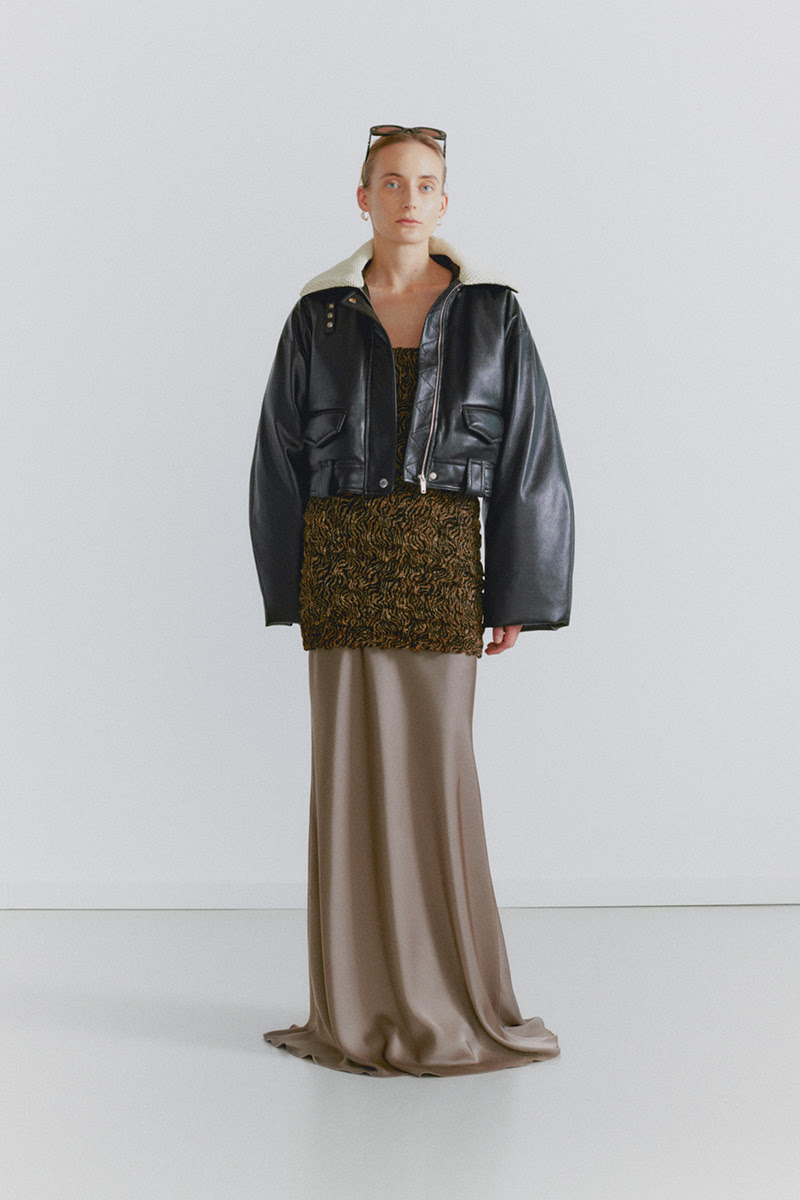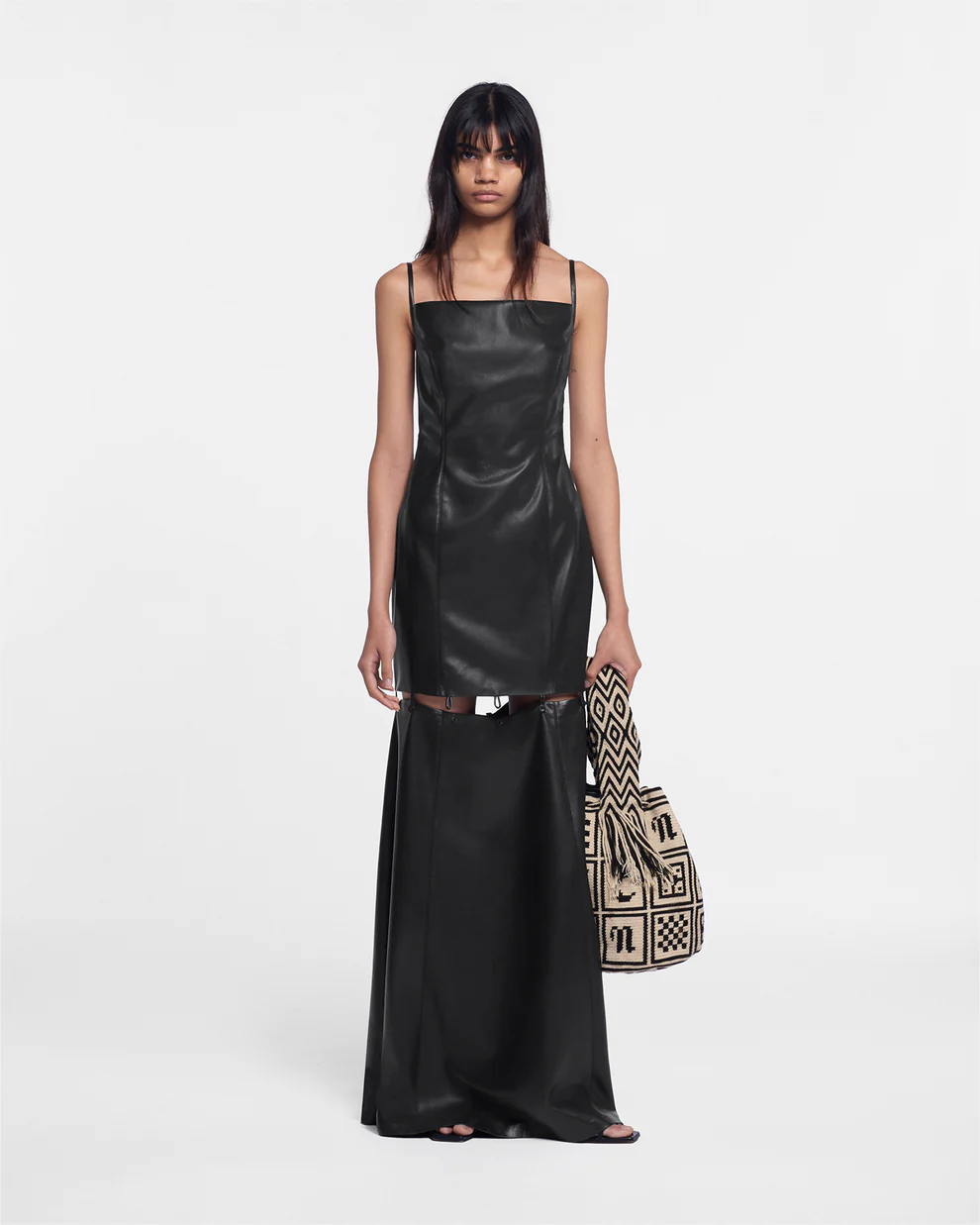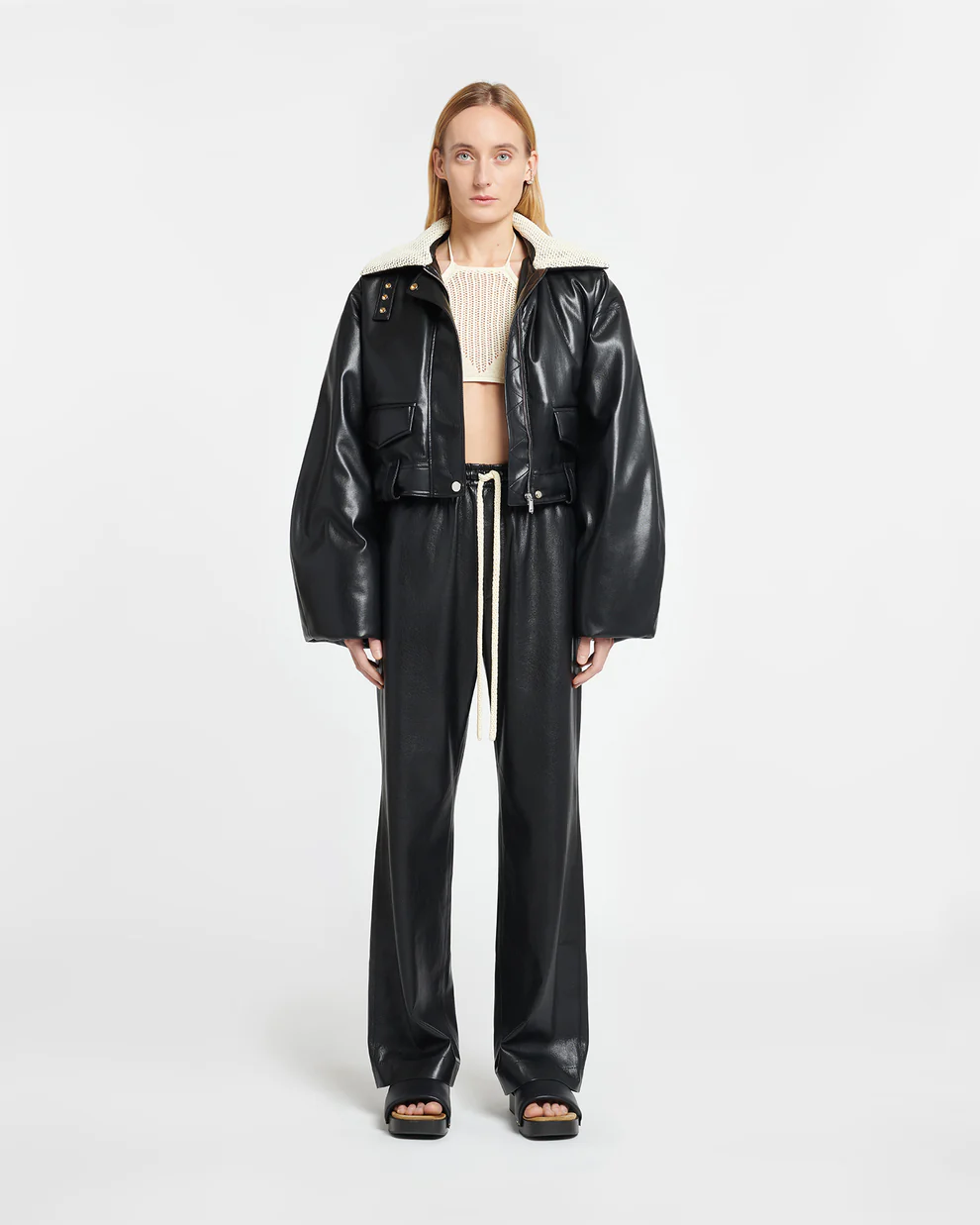Why is there no winner in a "vegan" vs. real leather race?
Tena Lavrenčić
February 25, 2024
Tena Lavrenčić
February 25, 2024

I recently bought a leather laptop bag. The old one was running out of strength, a victim of years of wear and claws of my cat, but only after its zipper broke, I decided it was time for a change. My guiding thought was to find something classic, elegant, high quality and waterproof. There is no better material for this than leather. As soon as I saw a bag in the store that met all my criteria, I knew it was an opportunity I couldn’t miss. But with that seemingly simple purchase, I horrified a lot of people around me. Namely, it seemed completely unimaginable to them that a fashion activist was carrying a bag made of the skin of a dead animal.
Their reaction is not at all unusual. The topic of skin continues to dominate in activist circles that never stop discussing it, and the debate is especially lively when it comes to sustainable and ethical fashion. I admit, for years I myself used to judge people who would buy real leather, pointing out that it really doesn’t make sense to sacrifice animals for the sake of fashion. Especially today, when we have a great alternative: artificial leather. However, imitation leather has long been considered an inferior version of leather. Something that does not last and in which we only sweat. In short, a waste of money. The very names for this material indicate something that is “less good” than animal skin. Fake leather, artificial leather, sky, are just some of them. And then of course, there is the famous “eco” leather. It has spread everywhere from fast to haute couture. Although it is cheaper than the animal version, technology has advanced and today artificial leather has far better properties and quality than it used to have. The change in our attitude towards animals also contributed significantly to this. From public awareness to changes in laws, there isn’t much room for cruelty in fashion today. But are its “vegan” and “eco” substitutes really better?

People have been trying to make skin substitutes for centuries. Not necessarily out of concern for the animals, but because they were looking for a cheaper material than leather. An excellent example is the German presstoff. Invented yet in the 19th century, this imitation leather made from wood pulp became popular during World War II, a period of fabric shortages and rationing. Although a cheap alternative, this material would fall apart during frequent bending or contact with moisture. Still, the 20th century brought us synthetic leather as we know it today. After many attempts and innovations, people have finally been able to produce a material that behaves like leather – a material that is water resistant, flexible, soft and easy to clean. With the growth of fast fashion, it has become a popular choice for our shoes, jackets, belts, bags and more.
However, in most cases, synthetic leather today is, simply put, plastic. Generally speaking, there are two types of fake leather: polyurethane (PU) and polyvinyl chloride (PVC, sometimes known as “vinyl”). PU is made by coating a layer of fabric with polyurethane (plastic). Depending on the use and expected results, the fabric can be organic (like cotton) or polyester. This material is quite similar to animal skin and is often used when making shoes or furniture. PVC or “vinyl” is also not much different: it usually involves multiple layers. Again, the fabric is covered with plastic-based layers. This usually makes it stronger, but also more durable.

Eco leather is mainly a marketing term, behind which it is not always clear what it exactly stands for. The origin of obtaining artificial leather is already problematic at first glance. What is sold as eco, and often as “vegan leather”, is actually plastic. Not only does it come from non-renewable sources (fossil fuels), but it is also very harmful to the environment. Such materials release microplastics every time we wear them. Research shows that every year, 13 million tons of synthetic fibers end up in the ocean. Once we discard synthetic clothing, it will sit in landfills for centuries because it cannot be degraded. In theory we could recycle it, but plastic or mixed fabrics are generally very difficult to separate and reuse. If you want to find an exact information, you will soon realize that there is too little of it, and when it comes to textile recycling today, there is also a lack of transparency. However, we can conclude with great certainty that most synthetics will end up in the trash. Also, the way these materials are mostly produced involves the use of toxic chemicals, such as phthalates (a group of chemicals that make plastic flexible and durable), and some fake leather (especially the PVC type) can release dioxins, which is certainly not good news when is about the impact on human health.
In short, there is little that is ecological in eco leather. This is what I mean when I say that eco-leather is a marketing term: it certainly sounds nicer than plastic leather. The same applies to the concept of vegan leather. A denim jacket is also technically vegan (in the sense that it does not contain materials of animal origin), but no one will advertise it as such. Since brands know that consumers often avoid real leather due to animal cruelty, the word “vegan” helps them hide what is behind this material. In my opinion, both names are a typical example greenwashing or false green claims by which marketing tries to convince the customer that he is making the right choice.
Although I doubted the validity of her claims until recently, my mother was right after all: real leather usually lasts longer than the synthetic alternative. If you’ve ever worn both, you’ll know that the one that comes from animals also breathes better and becomes softer and more supple over time. Yet leather is a product, or sometimes a by-product, of the animal industry, which is one of the world’s most damaging industries: responsible for most greenhouse gas emissions, water pollution, soil degradation, biodiversity loss, and more. Due to the obvious connection with climate change, scientists are now encouraging people to reduce meat consumption. The reason for this lies in the way we raise, train and kill animals, which is far from sustainable.
Also, leather can come from different animals, including exotic and endangered species, which is an ethical problem in itself. However, most leather comes from common domesticated animals, such as cows, pigs, sheep or goats. Leather is often a by-product of the meat industry, meaning that the animal is mostly killed for meat, and the leather is waste. At first glance, that doesn’t sound bad. The skin would be there anyway, so it should be used. But when you consider how expensive quality leather is, things often get murky. The leather market in 2022 was worth 242.85 billion dollars (compared to “only” 17.2 billion dollars worth of synthetic leather in the same year), and significant growth is predicted in the next few years. However, what animal protection associations often warn about, and what is quite clear, is that animals are often killed and tortured primarily for their skin or fur. Besides the ethical issues with animal skin, the way we produce it can also be dangerous. In order to preserve the leather, we have to use chemicals, in a process called tanning. Because of the fast-paced market today, manufacturers often use cheap chemicals with permanent results, such as chrome, formaldehyde, and various dyes. These chemicals are a potential threat to the health of workers in the leather industry, as well as those who wear such products. Although leather is biodegradable (like any organic material), these chemicals can make it problematic because they can leak into the environment.
But, unfortunately, that is only one part of the story. Due to the necessary breeding of animals in order to obtain leather, this material also contributes to deforestation today. The carbon footprint is also high, often higher than that of synthetic leather. For example, the organization Collective Fashion Justice estimated that during the production of a cowhide bag, an additional 100.5 kg of CO2e is released into the atmosphere. It is more than driving a car on the route from Zagreb to Prague. For comparison, the same bag made of fake (PU) leather will cause an additional 14.4 kg of CO2e. Furthermore, cowhide products use up to 14 times more water than synthetic leather. It is estimated that the production of a cowhide bag requires the same amount of water as the average person drinks in 23 years of life.



In recent years, due to increased awareness of the high environmental cost of leather, much energy has been invested in creating a more sustainable alternative. This is where leather of vegetable origin comes into play, which is an increasingly common phenomenon. Some of the most popular examples are Piñatex (made from pineapple leaves), apple leather, and Muskin (mushroom-based). There are also versions made from cactus, corn and other plants. These materials are still in the development phase and are expensive, especially compared to plastic. However, many brands accept them. There are good reasons for this: these materials come from renewable sources, are of organic origin, do not harm animals and retain many of the characteristics of leather.
It might seem like we’ve found the answer to the animal vs. fake leather dilemma, until we look at the problem a little more closely. These materials are still in the early stages of development and in most cases we have to use them with some type of plastic to preserve them. Also, just because the material base is sustainable, doesn’t mean it hasn’t been treated with dangerous chemicals. In other words, this is not a perfect solution, although it is certainly a significant improvement. With increasing interest in such materials and increasing investment in technology, the number of innovations will naturally increase. So far, although there are examples of plastic-free vegetable leather (for example, the Stella McCartney brand introduced 100% vegetable leather last year), such sustainable alternatives are, unfortunately, still the exception.
Did I mention that the laptop bag from the beginning of the story is a second hand item?
It’s somehow always my personal choice when I decide to buy leather. In my experience, good leather products really do last and I consider them an investment. When I buy them used, I’m not increasing the demand for new products and I’m not contributing to an extremely problematic animal industry. Unfortunately, the second-hand option is not always available, and sometimes it is truly difficult to find a well-preserved piece that will truly last for years. As much as I love this option, the truth is that second hand is not enough by itself. However, what I am quite sure of is that we should start by buying less but better quality. Whichever leather you choose, it’s important to make sure you choose good quality and maintain it well to extend its life. Both animal skin and plastic are problematic for the environment mainly due to overproduction. The biggest problem is not in individual pieces of clothing, but in the unsustainable system of the fashion industry, which is based on large quantities that are produced and the constant desire for new things. Although the dilemma is seemingly insoluble, whichever path you take and whichever option you consider more “painless”, always try to choose quality that will last.